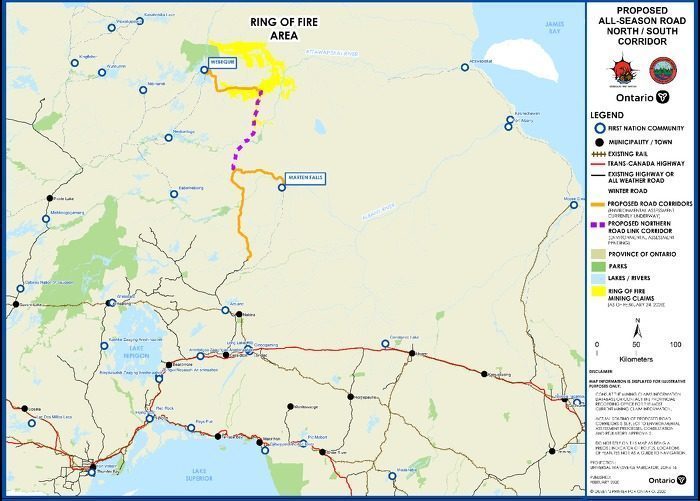Ontario and First Nations Working Together to Create Jobs and Prosperity for the North
March 2, 2020 12:30 P.M. – Office of the Premier
TORONTO — The Government of Ontario, Marten Falls First Nation and Webequie First Nation are taking a major step forward in unlocking jobs and opportunity in Northern Ontario’s Ring of Fire region by entering into a historic agreement to advance the planning and development of a proposed Northern Road Link.
Premier Doug Ford and Greg Rickford, Minister of Energy, Northern Development and Mines and Minister of Indigenous Affairs, were joined by Chief Bruce Achneepineskum of Marten Falls First Nation and Chief Cornelius Wabasse of Webequie First Nation at the Prospectors and Developers Association of Canada (PDAC) convention today for a signing ceremony.
The government is delivering on its promise to move forward with the development of the Ring of Fire with willing partners, including Indigenous groups and Northern communities.
























